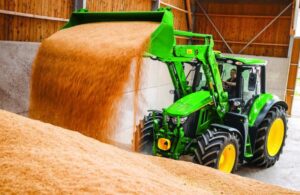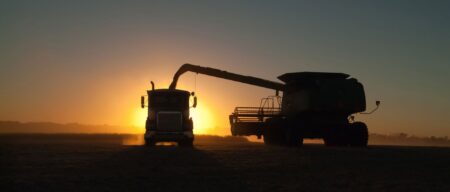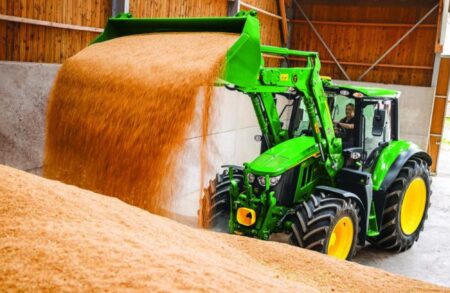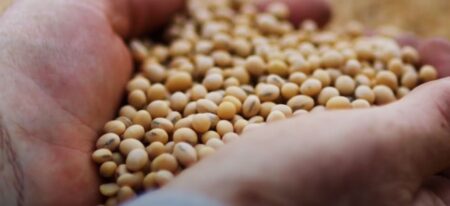By Ryan Hanrahan
Progressive Farmer’s Russ Quinn reported that “agricultural land values have remained remarkably stable through mid-2025, according to a news release from Farmers National Company. The resilience is mainly driven by the basic economic principle of supply and demand; there are simply more motivated buyers than willing sellers.”
“While producers remain the main buyers of ag land, interest from individual and institutional investors cannot be ignored, according to the company,” Quinn reported. “As land value stabilizes after reaching peaks within the last five years, investors are increasingly attracted by both annual returns and long-term appreciation. Benchmark Midwest farmland values have increased by 56.9% over the past five years and 38.3% over the past decade, reinforcing land’s appeal as a long-term asset.”
“Farmers National Company said inventory remains limited with listings down 20% to 25% from the peak in 2020-21. Many long-term landowners are choosing to hold onto their properties, recognizing the stability and value appreciation land offers compared to more volatile investments,” Quinn reported. “Paul Schadegg, senior vice president of real estate at Farmers National Company, said farm profitability will be a key factor affecting land values in the future.”
“‘The USDA forecasts 2025 net farm income to be the lowest since 2020. This will likely influence producer purchasing power and investor returns, especially as input costs, commodity prices and interest rates fluctuate,’ Schadegg said,” according to Quinn’s reporting. “‘While balance sheets generally remain strong, any negative movements in the ag economy could quickly impact the land market.’”
Ag Land Values Decline Slightly in Midwest, Increase in West
Farm Credit Services of America reported earlier in July that “in the first half of 2025, values were largely flat, increasing an average of 1.70% across Iowa, Nebraska, South Dakota and Wyoming. Iowa and Nebraska each saw slight declines. This was the second consecutive dip for the two states, although values remain near their record highs. Average farmland values ticked up in South Dakota and Wyoming.”
“Most benchmarks are cropland, but pasture or a combination of crop and pasture also are included,” FCS America reported. “Among the cropland benchmarks, Iowa has experienced a decline of -0.10% and -3.60% for the same period in 2025 and 2024, respectively. Nebraska cropland values are down -0.50% since January 1 and -1.20% compared to a year ago.”
Courtesy of FCS America
The University of Nebraska–Lincoln’s Ryan Evans says Nebraska’s ag land value has declined even more significantly, however, declining “in 2025 for the first time in six years, falling 2% to $3,935 an acre, according to the final report from the University of Nebraska–Lincoln’s 2024-25 Farm Real Estate Market Survey.”
“The decline comes as Nebraska crop producers face growing financial pressures,” Evans reported. “Following years of rising farm income, the land market is beginning to reflect recent realities like lower crop revenues, elevated production costs and higher interest rates, according to Jim Jansen, an agricultural economist with Nebraska Extension who coordinates the annual report.”
FCS America said that while there are declines in some Midwest ag land values, “South Dakota cropland values have improved 3.50% and 6.20% in the past six and 12 months, respectively, while Wyoming has remained stable, increasing a modest 0.50% during the past year.”
What Lies Ahead for Ag Land Values?
FCS America reported that “challenges do lie ahead for agriculture, the most immediate being the 2025 corn harvest. Based on current crop conditions and the 95 million acres of U.S. corn hit trendline, farmers could deliver a bumper crop — potentially into a market with fewer buyers.”
“‘Unlike short-term commodity price swings or isolated financial stress, land values reflect long-term confidence,’ (Tim Koch, executive vice president of business development) said,” according to FCS America. “‘When producers are still willing to invest in farmland, it tells us they believe in the future of the industry. That kind of stability is a grounded, tangible signal of where agriculture really stands.’”
Quinn reported that “geopolitical developments also influence the land market, according to Farmers National Company. Trade policies, tariffs and global unrest create uncertainty, affecting both domestic and international markets. While renegotiated trade agreements may present future opportunities, current tariffs could decrease demand for U.S. agricultural exports as other countries expand their production and infrastructure.”
“But there isn’t a scenario in which land values consistently improve, (Koch) noted, and looking ahead to the remainder of 2025, values likely will experience downward pressure,” FCS America reported.
Ag Land Values Mostly Stable Through First Half of 2025 was originally published by Farmdoc.


:max_bytes(150000):strip_icc()/CaseCombineAndTractorHarvesting2-WideShot-2000-300009fbd0da4f08ac67aee726a10e90.jpg)




:max_bytes(150000):strip_icc()/2208-05-071_farm_grain_bin_silo-453e0ef674bd4e0f97867e1e4281c5dd.jpg)


:max_bytes(150000):strip_icc()/Markets-9-Corn-down-wheat-down-5-255020c945814214a487a11b89b5066b.jpeg)
:max_bytes(150000):strip_icc()/SoybeanRedCrownRotSPorter-a25a83ece6b54909b3e6ba0d997bd49c.jpg)
